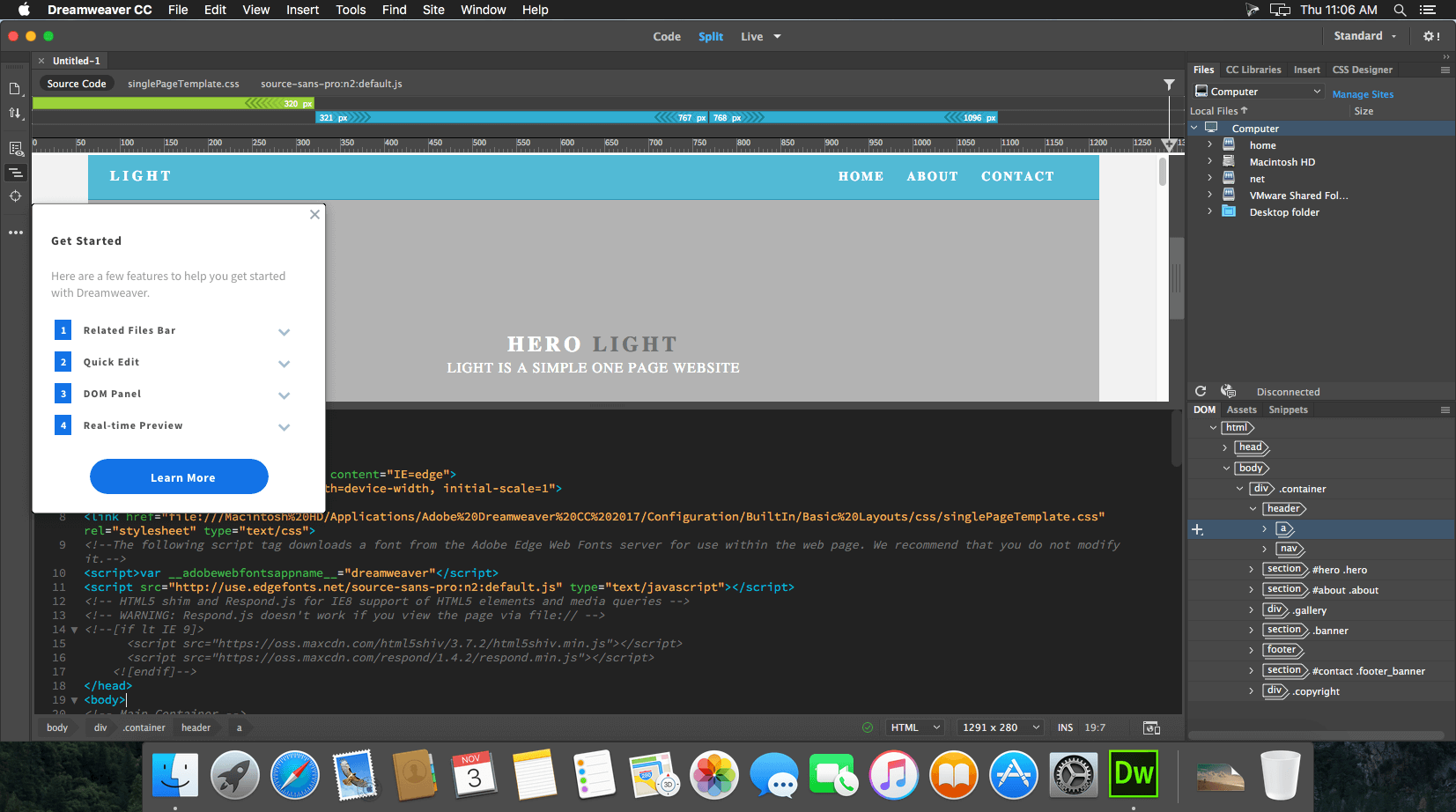

- #ADOBE DREAMWEAVER CC CLASSROOM IN A BOOK 2017 EPUB CODE#
- #ADOBE DREAMWEAVER CC CLASSROOM IN A BOOK 2017 EPUB PLUS#
and that will produce the entire styles sheet for you. you can only write one directive that will parse somes maps objects. So instead of writing 4 styles sheets, one for the common aspect + one for each declinations. most of the small web site can be greedy for that. (sure that you can decline it as you want.). say that the commercial part of the site will be based on yellow colors, the products catalog or services using a blue approach and the hotline, or technical part being green. Say your client want to have different declination of the same web site, or displays. please let me reformulate and clarify it. Nesting function are somewhere interesting worth when you have to go using directives in Sass. I've posted an FR two years ago in DW CAB to get a dedicated panel to store and use those variables as we did at the time of variables and binding panels for SQL informations. in fact in sass, and with the use of partials, you just have to store all your variables in a specific and dedicate file, and have this file open on the side to get and put them. When you say, that you always have to go up and down in your files to verify and read/write your variable.
#ADOBE DREAMWEAVER CC CLASSROOM IN A BOOK 2017 EPUB PLUS#
Plus for sure, many chances that they will also be store in an third and external map too. color labels are just wrote as exemple and to make it simple, because I will prefer to use the TSL mode to represent them it will refer to $colors("title":black, "subtitle":gray,"paragraph": lightgray). because for delta and text color, I will most refer to map Module: Sass::Script::Functions - Sass DocumentationĪnd so. like $deltaPaddingReference or $generalTextColor, $titleTextColor. Personnaly I would prefer some thing more based on the context of use. as you describe $paddingRight20Bottom10 or $mySpecialBlueColor.


and I never use variable name or container labeled by the content. I prefer store reference materials, delta values, crucial points. Personnaly I never store any padding marging or what ever such a type of information in variables. Well, I understand why you can't like preprocessor and oop approach (including BEM, ITCSS, OOCSS and so on.). I better understand your way and your approach, and, in fact, I realise that we clearly live in two differents worlds for writing code. My opinions are purely based on what I have encountered.
#ADOBE DREAMWEAVER CC CLASSROOM IN A BOOK 2017 EPUB CODE#
Do I think code indentation is easier to read than no code indentation, or dark colored UI's/editing environment are useful to me, no. Maybe there are editors that know what color is stored in the variable and can show it as a block of color next to it but the ones I've used dont.ĭo I find nesting styles easier to read that lisiting those styles long-hand, no.īut then again each to their own. I'm not really going to know what $mySpecialBlueColor is unless I travel all the way to the list of variables, usually at the top of the page, to see the block of color next to it. If I was at the foot of SASS file and wrote: I dont know even if its a good idea to store colors in variables as you can never see those colors in a SASS file I'd have to think about coming up with a descriptive variable name which may clash with something in the future so I may have to re-write it later on in the process Why would I wantto store padding: 0 20px 10px 0 in a variable? Variables - both use a similar workflow, assigning properties to variables mostly which you would store at the top of your page and mostly you can never remember what those variables attributes are, which in my opinion if you can do without is much better. Or why are you comparing PHP to Less/Sass ?


 0 kommentar(er)
0 kommentar(er)
